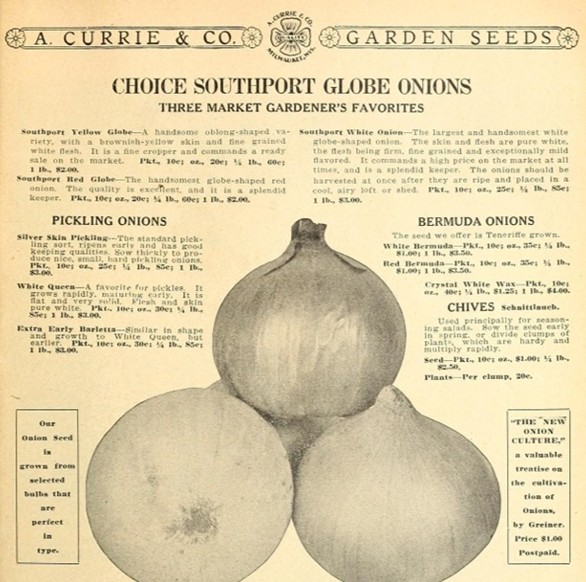Today, Southport, Fairfield, and Westport, Connecticut, are known for their upscale homes and thriving communities. However, long before they became desirable residential enclaves, these towns were the epicenter of a thriving onion farming industry. In the 1800s, area fields produced thousands of barrels of onions each year. At the heart of this booming industry was Southport Harbor, the gateway through which countless barrels of the region’s prized Southport Globe Onions set sail.
The Rise of Onion Farming
The fertile land along Connecticut’s southern coast provided ideal conditions for farming, and by the 1840s, onions had become the dominant crop. Farmers, including the Sherwood, Wakeman, Banks, and Hull families, cultivated vast fields stretching from Sasco Hill and the Greens Farms coastal plain to Greenfield Hill, Mill Hill, and Round Hill.
The Southport Globe Onion became a highly sought-after product in the New York market, and during the Civil War, the Union Army relied on Connecticut onions as a key food staple because they were rich in vitamin C, which helped prevent scurvy.
Southport Harbor: The Lifeline of the Onion Trade
Southport Harbor played a crucial role in the distribution of onions. This deepwater harbor, with its strategic location along Long Island Sound, allowed local farmers to bypass Bridgeport and Norwalk and ship their onions directly to New York City.
During peak seasons, sloops and schooners left Southport Harbor several times a week. Farmers from Mill Hill, Greenfield Hill, and beyond eagerly watched for the arrival of market boats, rushing their wagons down to the docks when a shipment was ready.
John Bulkley and his brother Peter, among others, captained these onion-laden schooners, ferrying goods to Manhattan and returning with molasses, flour, sugar, rum, and other staples.
The onions commanded premium prices, with white onions selling for up to $10 per barrel—a small fortune at the time. Southport Globe Onions, in particular, were in such high demand that warehouses lined the Southport shoreline, packed with barrels awaiting shipment. These onions were prized not only for their excellent taste but also for their ability to be stored for long periods without spoilage, making them a valuable commodity for markets that required long-lasting produce.
The Decline of the Onion Industry
For nearly 50 years, onion farming sustained the local economy. However, by the late 19th century, several factors led to the industry’s decline. The cost of fertilizers began to rise, making it difficult for small farmers to compete with larger, more mechanized farms in the Midwest. At the same time, western farmlands, where onions could be grown on a much larger scale, became more dominant in the market, forcing Connecticut farmers to lower their prices.
The final blow came in 1894, when a devastating outbreak of cutworms and fungal disease wiped out Connecticut onion crops. The once-reliable fields were rendered useless, and despite efforts to recover, the industry collapsed almost overnight. Some farmers attempted to pivot to other crops, such as strawberries, but large-scale commercial onion farming in the region never returned.
With the decline of agriculture, land in Fairfield, Southport, and Westport became more valuable for residential development. Wealthy New Yorkers, seeking summer retreats, purchased farmland and built estates along the coastline. By the early 20th century, the onion fields had disappeared, replaced by tree-lined neighborhoods, estates, and suburban developments. Southport Harbor, once bustling with market boats, saw a shift in its purpose. The old onion warehouses and shipping buildings were torn down or repurposed—including the current site of the Pequot Yacht Club.
Cress is a leading real estate agent serving buyers of high-end properties in Fairfield County, CT. What sets us apart from other agents is our unwavering commitment to offering the lowest fees in the industry for the level of service we provide. We believe you shouldn’t have to sacrifice quality for affordability.
Our flat fee buyer’s agent services and commission rebate models make luxury real estate more accessible, delivering top-tier service and unmatched value. By streamlining operations and leveraging technology, we pass those savings directly to you, ensuring an exceptional real estate experience. For more information, visit www.callcress.com.
Doug Cress
(212) 203-5251
doug@cress.co
License #RES.0832278
Fairfield County, CT
Enterprise Realty Inc.
License #REB.0751297
45 Huntington Plaza
Shelton, CT 06484




